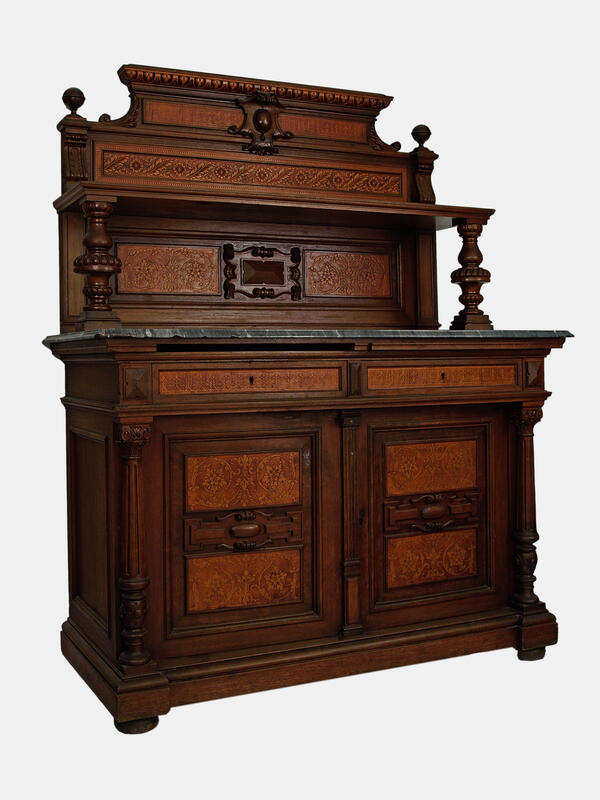This is an antique sideboard with carvings, decorative patterns and a gray marble top. The upper section is removable. The lower section has two doors. The top and bottom of the cupboard are divided by a niche with a marble tabletop.
The upper section of the open-type sideboard has a shelf, supported by two carved columns.
A sideboard was usually used for placing dinnerware before serving the table. Under the marble top, there is a collapsible food cutting board and two sliding drawers. The lower part of the sideboard still contains items from the memorabilia collection — the dishware that belonged to the Sergeyev-Tsenskys, including porcelain dishes and plates from a service made at the Dulyovo factory, a sugar bowl made of Chinese porcelain and some plastic dinnerware.
Food was prepared by housemaids in a small separate room — a kitchen, which was next to the eastern veranda. The writer’s wife, Khristina Mikhailovna, supervised the cooking process and closely observed the writer’s adherence to his diet. Groceries were brought from the city by Khristina Mikhailovna accompanied by Yury Borovich, Sergeyev-Tsensky’s personal chauffeur.
The dining room is adorned by three decorative vases, standing on the shelf. The vases — a vase with masks and shields, presumably made of Czech porcelain, a German porcelain vase in a metal frame with a painting of a young woman sitting on a rock, and a white and pink Bohemian glass vase with an image of an ancient castle inlaid with small beads — belonged to the writer. A sideboard was considered proof of the owner’s wealth. The displayed one not only adorned the dining room in Sergeyev-Tsensky’s writing studio but also played a functional role. For example, the meals were placed on the sideboard before being served.
The writer Arkady Perventsev wrote the following about his visit to the Sergeyev-Tsensky Museum and the dining room,


